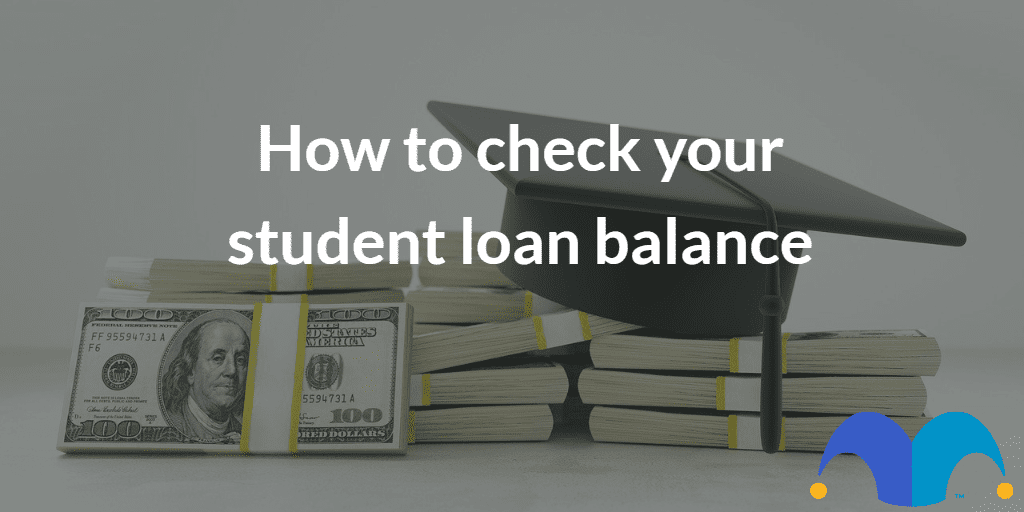Did you take out a student finance loan at university to help with tuition fees and living costs? Keeping track of how much you owe can help you budget and manage your money better. It can also help you keep your debt under control. Here is a useful guide to checking your student loan balance.
How do I check my student loan balance?
The easiest way to check your student loan balance is through the ‘manage your student loan balance’ tool on the gov.uk website.
To use this tool, you will need your customer reference number or the email address that you signed up with. You will also need to log in with a password and secret answer, such as your mother’s maiden name.
If you have changed your email address since signing up for your loan, you should contact the Student Loans Company (SLC).
If you applied for student finance through the Student Awards Agency for Scotland (SAAS) and you are signing in to this service for the first time, you will also need to contact the SLC so that they can set up your account.
Once you’ve successfully logged in you will be able to see your balance. You will also be able to:
- See how much you’ve repaid towards your loan
- See the amount of interest on your loan so far
- Make a one-off repayment
- Set up and amend direct debits
- tell the SLC about a change of contact details
How do I repay my student loan balance?
The earliest you’ll have to start repaying your loan is 6 April in the year after you finish your course.
If you are employed, repayments are typically taken from your monthly pay at source. They only start once you’ve started earning above a certain salary threshold. This threshold depends on which repayment plan you are on.
The actual amount you pay will depend on the amount you earn over the threshold during any given pay period. If your income falls below the threshold at any point, then your repayments will pause.
If you are self-employed, HMRC will calculate what you owe each year in repayments once you file your tax return.
How can I clear my student loan balance more quickly?
If you want to clear your student loan balance more quickly, you can make single extra payments directly to the SLC on top of the standard repayments you must make when your income is over the threshold amount for your repayment plan.
You can make these extra repayments at any time using your online account, by cheque or by bank transfer.
You also have the right to pay off your outstanding student loan balance in full at any time.
However, before choosing this route, make sure you have first considered how this will affect your financial wellbeing and whether there is another way to make better use of your money.
How can I avoid overpaying my student loan?
It is possible to end up overpaying your student loan.
In the 2019-2020 financial year, for example, over 55,000 former students overpaid their student loans with one of the main reasons being failure to sign up and take advantage of the student loan balance management tool on the gov.uk website.
A good way to avoid overpaying your student loan is by setting up a direct debit at some point in the final two years of the loan term. You can do this on the gov.uk website.
In fact, the SLC will write to you a year before your balance is due to be repaid, inviting you to join the scheme and will remind you thereafter through emails and text.
The main benefit of signing up for the direct debit scheme is that debits will automatically stop once your loan is repaid, ensuring that you do not overpay.
How do I repay my student finance balance from abroad?
Even when moving abroad to live or work, you still need to continue paying your student loan. If you are away working for three months or longer, you need to contact the Student Loans Company. That’s because the thresholds for payment vary between countries. And the amount you need to pay could increase or decrease.
The thresholds for different nations depend on the student loan plan you are paying. However, the complete list of thresholds for each plan as of 2024 can be found on the UK government website.
- Minimum payment thresholds for Plan 1
- Minimum payment thresholds for Plan 2
- Minimum payment thresholds for Plan 4
- Minimum payment thresholds for Postgraduate Loan Plan
When is my student loan cancelled?
Providing that certain criteria are met, your student loan could be entirely wiped out even if not fully repaid.
The criteria depend on when the student loan was issued. For those who borrowed before 1 August 2007, the Student Loans Company will cancel any remaining debt and interest if:
- You reach the age of 65.
- You have been repaying the loan for 30 years.
- You die before repaying the loan.
- You become permanently unable to work due to a disability and receive benefits, providing written proof from a medical professional, which is given to the Student Loans Company.
For those who took out their loans after 1 August 2007, the criteria for cancellation are slightly different.
- You have been repaying the loan for 30 years.
- You die before repaying the loan.
- You become permanently unable to work due to a disability and receive benefits, providing written proof from a medical professional, which is given to the Student Loans Company.
The rules can also vary depending on which Loan Plan you have. And a full breakdown of cancellation criteria can be found on the UK government website.
